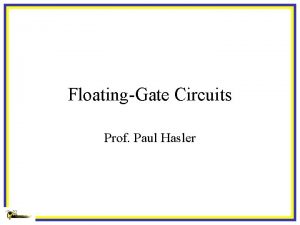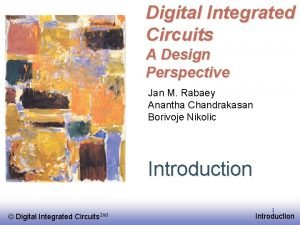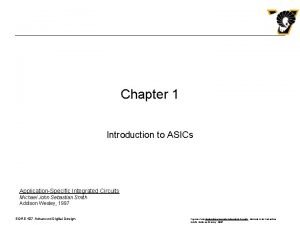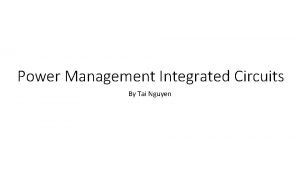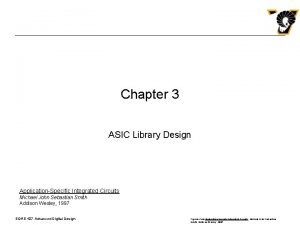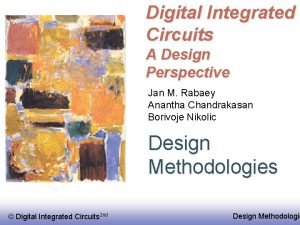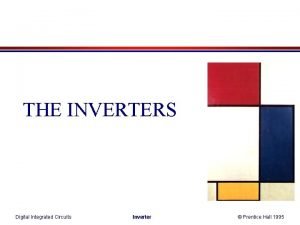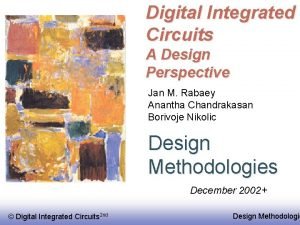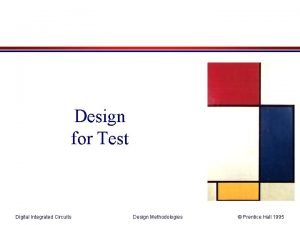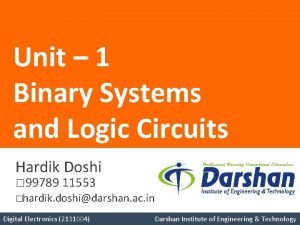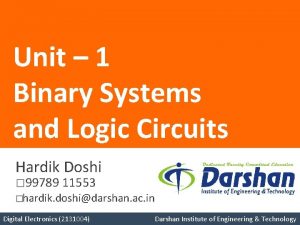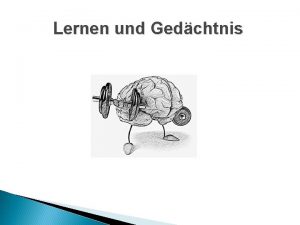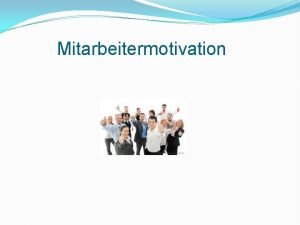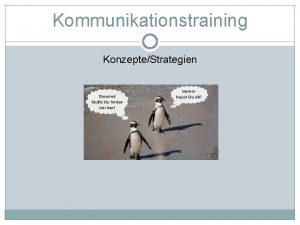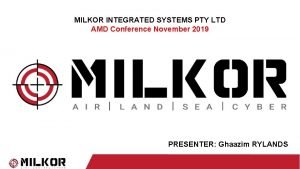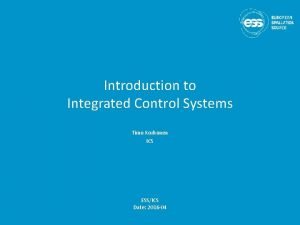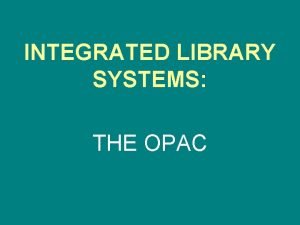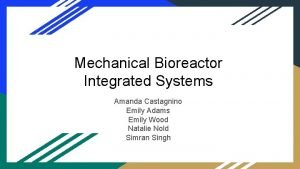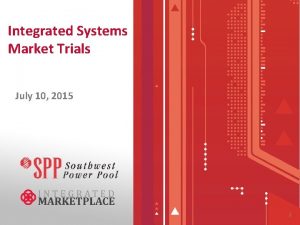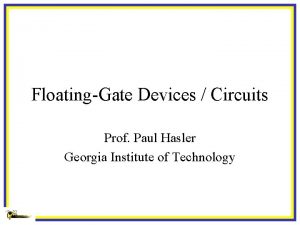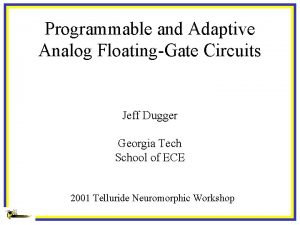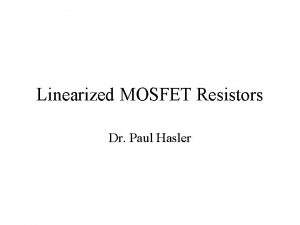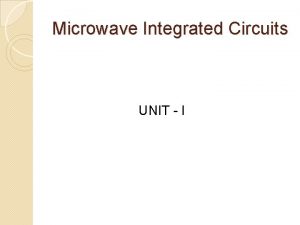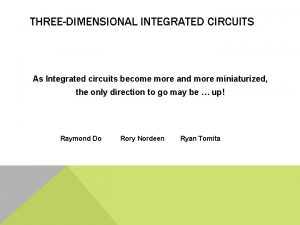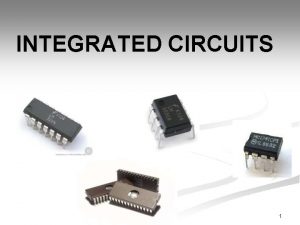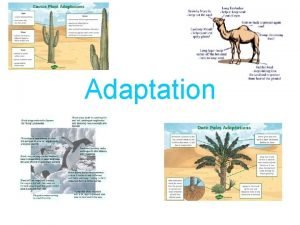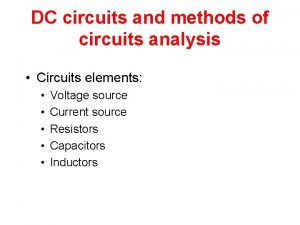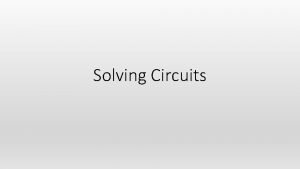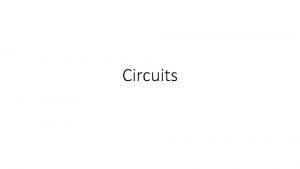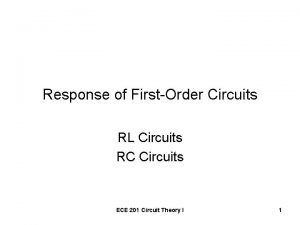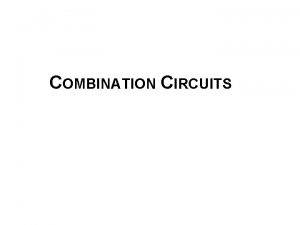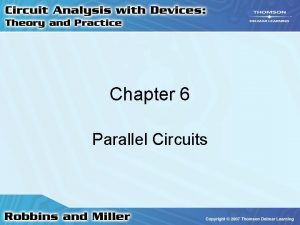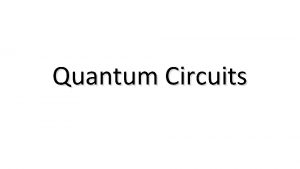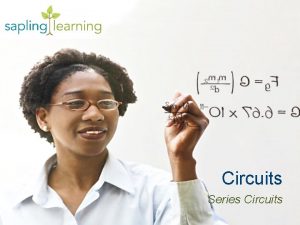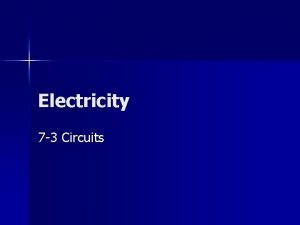FloatingGate Circuits Systems and Adaptation Paul Hasler Integrated
























![Drain-Gate Dynamic Equation W = 1 -h. E[Vg Vd] - e. W Drain-Gate Dynamic Equation W = 1 -h. E[Vg Vd] - e. W](https://slidetodoc.com/presentation_image/ae4eb7eb4244da2853188fc7c40dc3d6/image-25.jpg)





- Slides: 30

Floating-Gate Circuits, Systems, and Adaptation Paul Hasler Integrated Computational Electronics (ICE) Laboratory for Neural Engineering Georgia Institute of Technology

Things I don’t needed to cover Why use subthreshold devices? or can’t everything be built from op-amps and resistors? What are Floating-gate circuits? Why use neurobiology as inspiration for engineering systems? Where will this be used in an RF application?

Where we work

Laboratory for Neural Engineering Faculty: Robert Butera, Robert Cargill, Steve Deweerth, Bill Ditto, Paul Hasler, Michelle La. Placa Key Directions: • Neural Interfacing / Implants • Hybrid Neural-Silicon Systems / Computations • Neuromorphic Engineering

Top-Level View Inte rfac e. C ircu itry Neurons Sensor Circuits, etc.

After three years, what am I up to? Yet more Floating-Gate Research: • Industrial Strength Circuits • Cooperative Analog-Digital Signal Processing • Silicon Learning Neural Modeling • Building a single realistic neuron / small networks on a single IC (Density is key)

Overview of Floating-Gate Devices Information Storage Floating-Gate Transistor Modifying Floating-Gate Charge • UV photo-injection • Electron tunneling • Hot-electron injection

Floating-Gate p. FET Device Three Classes of Applications 1. Analog or Digital Memory 2. Floating-Gate Circuits 3. Adaptive Circuits

World of Floating-Gate Circuits

E-Pots R. Harrison, A. Bragg, and P. Hasler

Capacitor-Based Circuits Resistor-Based Design Capacitors and Inductors define the circuit dynamics Capacitor-Based Design Resistors and Inductors define the circuit dynamics Capacitors are the natural elements on silicon ICs

Where to divide Analog and Digital? Real world (analog) A/D Convertor DSP Processor Compter (digital) Specialized A/D Real world (analog) ASP IC A/D DSP Processor Compter (digital)

Low-Power Handheld Systems Sensor Signals ASP IC DSP IC Hasler and Anderson

Analog Computing Arrays

Current Directions Analog Side Demonstrate Larger Computational Blocks Reaching Industrial Specs / Reliability Signal Processing Generalize both analog and digital approaches in one framework. Develop design tools

Fourier-Based Programmable Filters Vin Bandpass Filters, Exp Spaced (Hard in DSP) W 11 W 12 W 13 W 14 W 15 W 1 n Iout 1 W 22 W 23 W 24 W 25 W 2 n Iout 2 Programmable Analog Filter C 4 filters

Basic Programming Structure

Programmable Filter 10 10 1 10 0 0 Individual Bandpass Filter Output 10 -1 -1 10 -2 Fourier Filter Output 10 10 -2 -3 10 0 10 -3 10 1 10 2 10 3 Frequency (Hz) 10 4 10 -4 10 5 Output Amplitude of Bandpass Filter (V-rms) Output Amplitude of Fourier Filter (m. A-rms) 10

Cepstrum Computation Vin Bandpass Filters, Exp Spaced (Hard in DSP) Log(Amplitude) Fundamental Brick W 11 W 12 W 13 W 14 W 15 W 1 n W 21 W 22 W 23 W 24 W 25 W 2 n Ioutm DCT Coefficients Cepstrum Coefficients Iout 1

Single-Transistor p. FET Synapses Computation Performed Vo = S W i Vi i Adaptation Performed Wi = - 2 Vi e Density / elegance is critical to large scale systems

Hot-Electron Injection Current is proportional to source current Floating-Gate Voltage 4. 319 V 4. 351 V 4. 280 V 4. 352 V p+ p+ n

Autozeroing Floating-Gate Amplifier (AFGA)

Dynamics of p. FETs and sd-p. FETs p. FET circuit has unstable dynamics Source-Degenerated Floating-Gate p. FET sd p. FET circuit has stable dynamics

Gate-Drain Weight Correlation 1. 7 Inputs: Vg = V 1 sin wt Vd = V 2 sin(wt + q) 1. 65 1. 6 Vd amplitude = 0. 1896 V 1. 55 Sweep q Weight 1. 5 1. 45 Vd amplitude = 0. 1264 V 1. 4 Fix V 1, V 2 (two V 2 amplitudes) 1. 35 Weq - E[ Vd Vg ] = - V 1 V 2 cos(q) 1. 3 1. 25 1. 2 0 50 100 150 200 Phase difference 250 300 350
![DrainGate Dynamic Equation W 1 h EVg Vd e W Drain-Gate Dynamic Equation W = 1 -h. E[Vg Vd] - e. W](https://slidetodoc.com/presentation_image/ae4eb7eb4244da2853188fc7c40dc3d6/image-25.jpg)
Drain-Gate Dynamic Equation W = 1 -h. E[Vg Vd] - e. W

A Floating-Gate Adaptive Node + V tun V +dibl I+1 I+2 V 1 I+N VN Adap tive Array V tun Vdibl I 1 -V 1 I 2 -V 2 IN -V N Progr ammed Array Vd I = I+ - I J. Dugger and P. Hasler

Correlation Data from a Node cos(wt) sin(wt) Synapse 2 Current (m. A) Synapse 1 Current (m. A) sin(wt + q) 0. 5 0 -0. 5 0 50 100 150 degrees 200 250 300 350

Synapse Weight Solution / Convergence sin(wt) sin(3 wt) Desired signal sin(0. 7 wt) sin(3 wt) sin(wt) t = 6. 5 s

Learning a Square Wave sin(wt) sin(3 wt) square(wt) 7 3 6 5 Outpu t Cur rent (m. A) Output Current (m. A) 2 1 0 4 3 2 -1 1 -2 0 10 20 30 40 50 Time (ms) 60 70 80 90 0 0 200 400 600 800 Frequenc y (Hz) 1 k 1. 2 k 1. 4 k

Conclusions • Floating-Gate Devices / Circuits are starting to move towards the system level, and are moving towards industrial standards / not user hostile • We can not only build adaptive Floating-Gate circuits, but floating-gate circuits that adapt as a function of input “statistics”. • Floating-gate Systems are becoming important tools in neuromorphic modeling
 Pafga
Pafga Paul hasler
Paul hasler Advantages of parallel circuits over series circuit
Advantages of parallel circuits over series circuit Digital integrated circuits a design perspective
Digital integrated circuits a design perspective Digital integrated circuits a design perspective
Digital integrated circuits a design perspective Application specific integrated circuit price
Application specific integrated circuit price Power management integrated circuits
Power management integrated circuits Aoi221
Aoi221 Ssi msi lsi vlsi ulsi classification
Ssi msi lsi vlsi ulsi classification Digital integrated circuits a design perspective
Digital integrated circuits a design perspective Integrated circuits
Integrated circuits Digital integrated circuits
Digital integrated circuits Integrated circuit
Integrated circuit Integrated circuits
Integrated circuits Characteristics of digital ic
Characteristics of digital ic 2057 octal to decimal
2057 octal to decimal Binary systems and logic circuits
Binary systems and logic circuits Transactions on circuits and systems
Transactions on circuits and systems Gruppendynamik
Gruppendynamik Frank hasler
Frank hasler Frank hasler
Frank hasler Frank hasler
Frank hasler Frank hasler
Frank hasler Frank hasler
Frank hasler Rolling about
Rolling about Milkor integrated systems
Milkor integrated systems Ess control system
Ess control system Library integrated systems
Library integrated systems Integrated systems testing
Integrated systems testing Adams integrated systems
Adams integrated systems Integrated systems market
Integrated systems market
